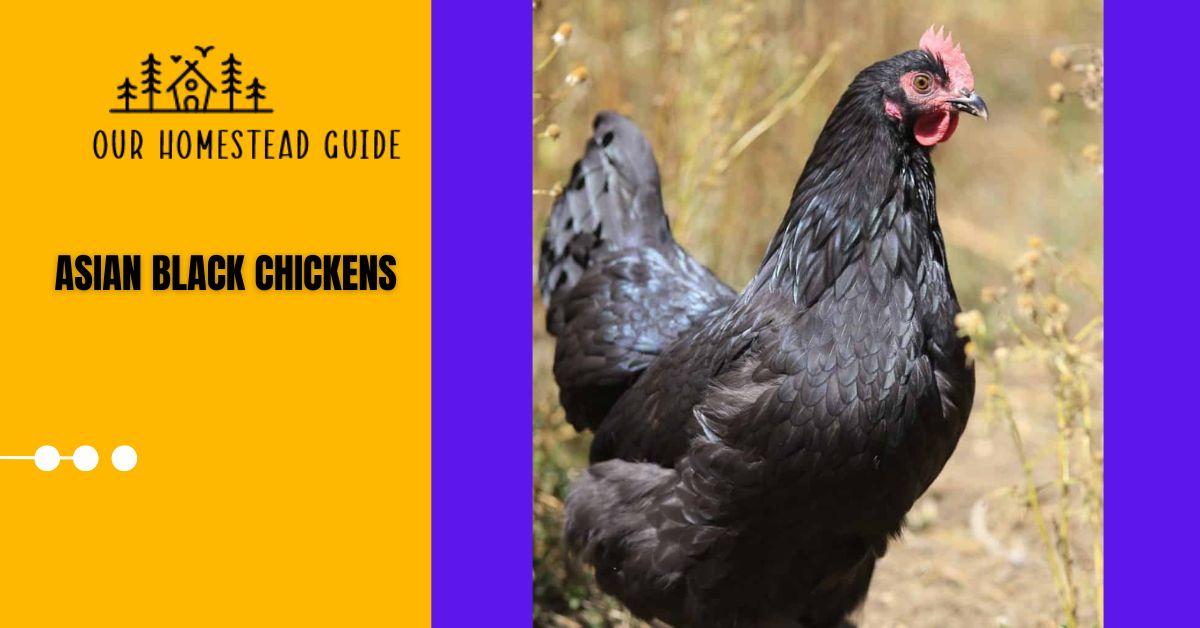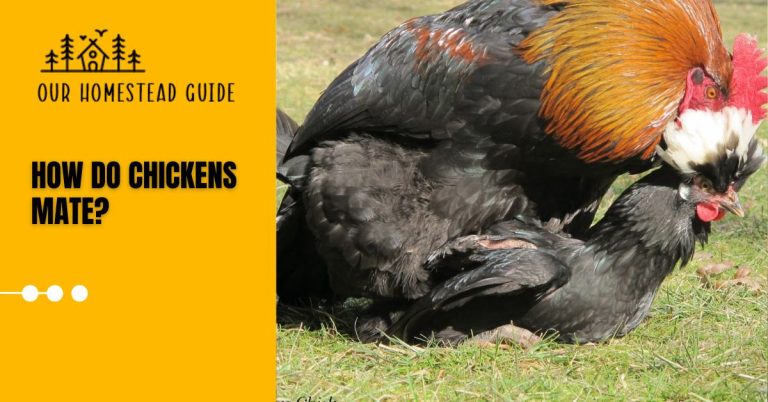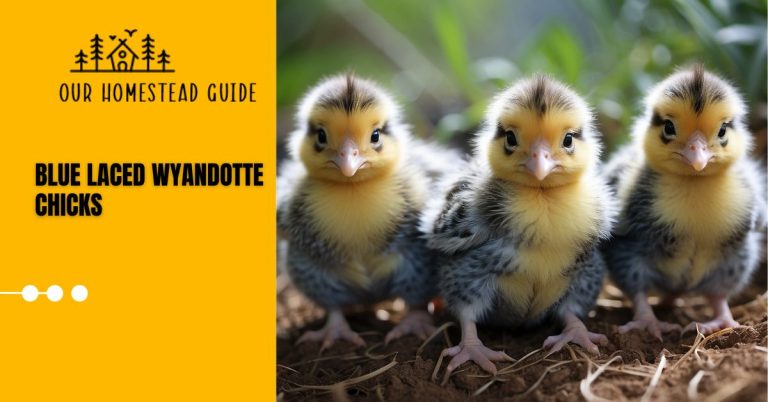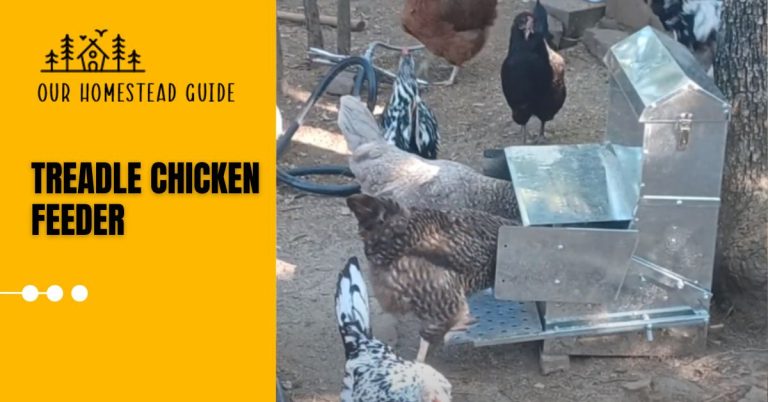Asian Black Chickens: Traits, Benefits, and Care Complete Guide
The Asian black chicken is a stunning breed of chicken that is sure to turn heads. These chickens are completely black, from their feathers to their beak, wattles, and even their internal organs! They have a sleek, graceful build and a shimmering black plumage that can sometimes have green or blue hues in the sunlight.
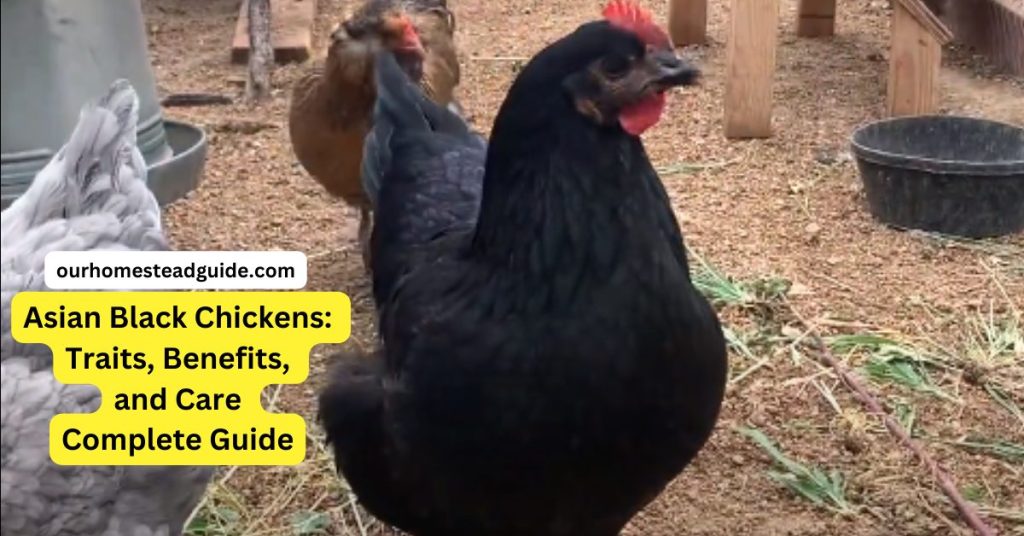
Asian blacks are relatively rare, but they are becoming increasingly popular with backyard chicken keepers due to their unique beauty and hardiness.
Asian black chicken overview

| Aspect | Description |
|---|---|
| Appearance | All black from afar; purplish-green shimmer in sunlight |
| Age & Acquisition | Acquired at end of March; Approximately 4-5 months old |
| Size | Considerably larger compared to other chickens |
| Health & Diet | Hearty, healthy, good eater, excellent foraging skills |
| Temperament | Docile and friendly, similar to Sapphire Gem |
| Egg Laying | Started laying recently; Production updates to come |
| Comparison | Similar in size to Sapphire Gem; Differences highlighted |
| Other Chickens | Sapphire Gem, Silver Laced Wyandotte mentioned |
| Conclusion | Excitement for future egg production; Positive experience |
| Homestead Name | Highland Homestead |
| Presenter | Nick from Highland Homesteading |
Description of the Asian Black Chicken:
Describe the physical attributes of the Asian Black chicken, emphasizing the feathers’ distinct purplish-green sheen.
Stress that even though it seems completely black from a distance, the shimmer emerges when the feathers are exposed to the sun.
Asian Black Chickens Age and Acquisition:
- Declare that it is the end of August and mention the current date.
- Describe the date of your purchase of the Asian Black chicken, mentioning that it was towards the end of March.
- Mention that the chicken is approximately four or five months old when estimating its age.
Size and Health:
Draw attention to the fact that your flock includes some of the largest Asian Black chickens.
Stress how robust and healthful it is.
Talk about its healthy hunger, ability to forage, and general health.
Asian Black Chickens Temperament:
Talk on the Asian Black chicken’s demeanor, pointing out that it is gentle.
Point out the similarities between it and another hen in your flock, such as the Sapphire Gem.
Comparison with Other Chickens:
Introduce the other hens in your farm, such as the Silver Laced Wyandotte and Sapphire Gem, for a short while.
Draw attention to the traits that set the Asian Black breed apart from others.
Asian Black Chickens Laying and Egg Production:
Bring up the fact that the Asian Black chicken just began to produce eggs.
Excite the audience about the possibility of egg production and assure them that you will provide them with future updates on the hen’s laying abilities.
Closing and Thanks:
- We appreciate everyone who has watched and followed Highland Homestead’s updates.
- Assure them that further updates will be provided shortly.
- Put your name (Nick) and the name of your homestead in the signature section.
Different Types of Black Chickens
Orpington
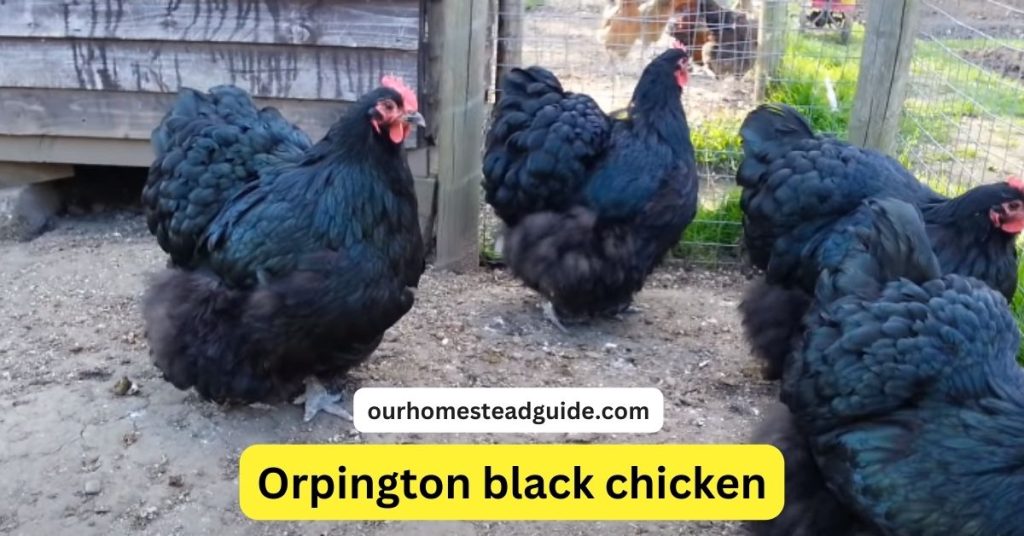
- Objective: Twofold
- Weight on average: 10 lbs.
- Production of Eggs: 150–300 yearly
One of the most popular breeds of chicken for backyard flocks is the Orpington. This type of bird, which is mostly black and has thick, fluffy feathers that enable it to quickly adapt to cold temperatures, originated in England in the eighteenth century.
Although they were originally white, Orpingtons are now also available in buff and black hues. They make excellent pets since they are calm, kind, and resilient. They are intriguing since they are among the hen kinds that are most devoted to their communities. In addition to finding food for their hens, the roosters will gather everyone at night to ensure that everyone has entered the coop.
This bird stands out in the barnyard thanks to its stunning black plumage, even if its skin is white and it does not have an all-black body. Although it may be produced for meat as well as eggs, eggs are the usual reason for raising it.
Every year, Orpingtons lay between 150 and 300 big brown eggs, many of which have a pink hue. Additionally, compared to other kinds of chickens, you may feed these less because they are superb foragers and will locate enough food on their own.
Australorp
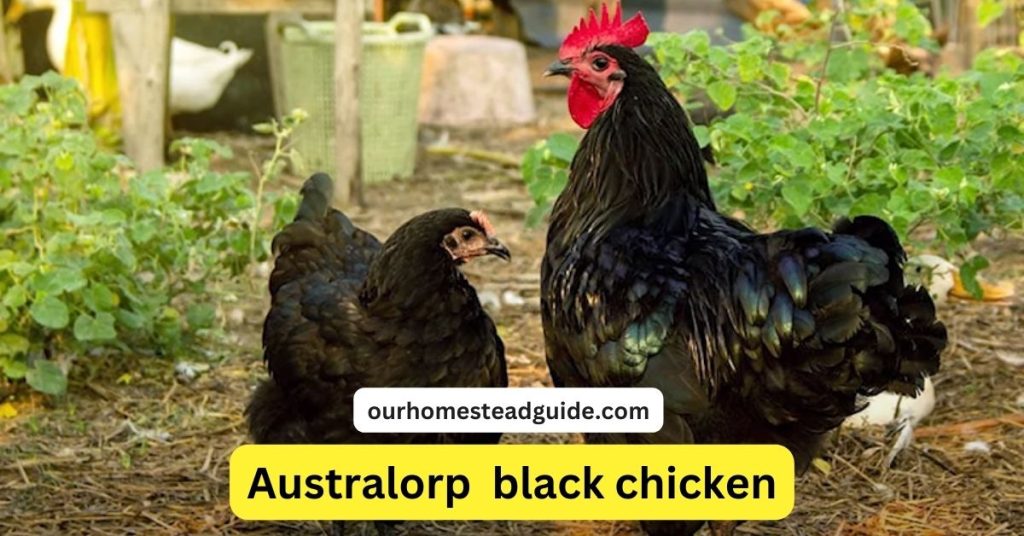
- Purpose: Dual-purpose
- Average Weight: 5-7 lbs
- Egg Production: 250 per year
Although Australians are available in a variety of hues, black is one of the most common. These stunning birds, which are an Australian hybrid of the Orpington breed, are rather easy to locate. Although they are quite kind and obedient, black Australorps may sometimes be very timid. There are Black Australians with green-tinged feathers as well.
The Black Australorp is a great choice if you want to keep black chickens as pets. These hens are not only quite beautiful to look at, but they also have a very devoted nature. A Black Australorp may be trained to eat right out of your hand.
Australorps are also excellent layers, laying a significant number of big brown eggs every week. The record for the most eggs laid in a year is held by an Australorp! They may also be reared to produce premium broilers for the meat market.
Silkies
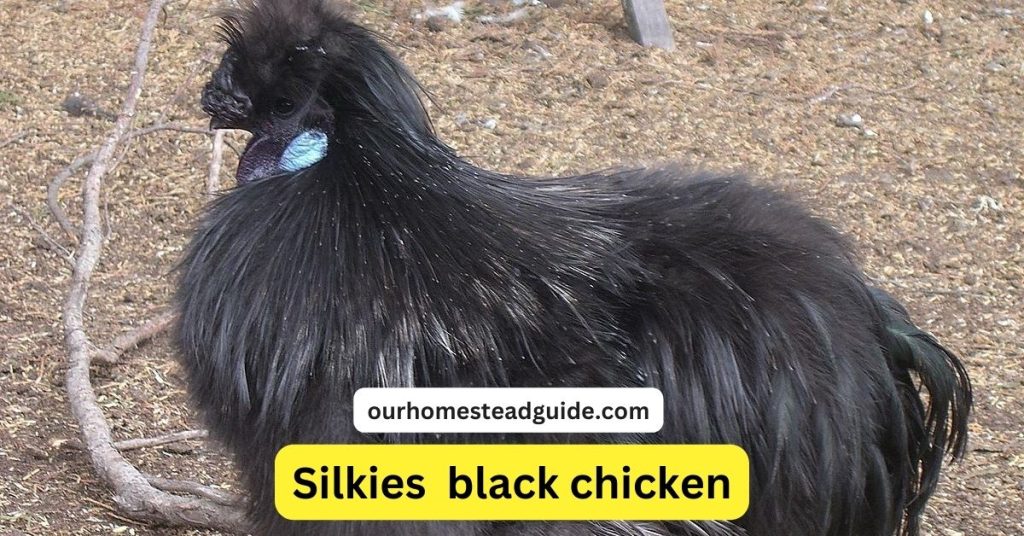
- Purpose: Ornamental
- Average Weight: 4 lbs
- Egg Production: 100 per year
Adorable silkies are among the most popular show and decorative hens. Although regular-sized Silkies can be bought in other countries, only the bantam form of this breed is sold in the United States.
The feathers of silkies are fluffy and black. Because of their unusual feather pattern, their feathers stand out rather than resting flat on their bodies. Although Silkies come in a variety of hues, black is one of the most widely used. Their skin and bones are similarly black.
Rather than having four toes, they have five, and even the color of their meat is a deeper gray-blue. Many areas consider Silkie meat to be a delicacy and think it to have curative properties.
Due to their petite size and fluffy coat, silkies are a popular choice for pets among poultry owners. A few proprietors even claim to have brought them inside the home! Even though silkies are just average layers, they make wonderful moms because of their serene, amiable personalities.
They have been developed specifically for this characteristic;, because Silkies have such a propensity to become broody, they are frequently used to “foster” eggs.
Remember that you must make sure your Silkie chicken has excellent living circumstances if you choose to raise one. These chickens are fully feathered, down to the feathers covering their feet, therefore getting their feet wet can easily create difficulties. They are great companions and rather talkative.
Minorca
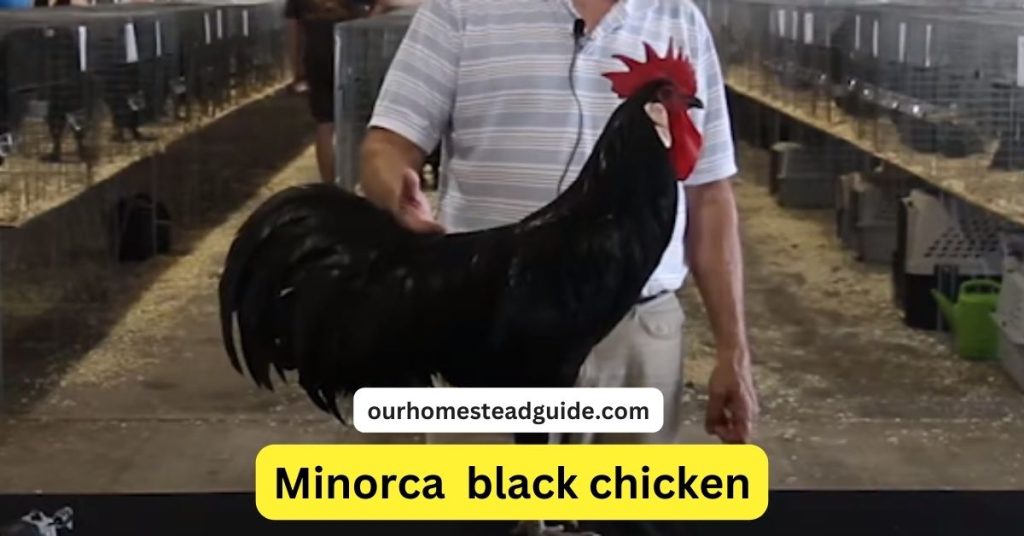
- Purpose: Ornamental/egg production
- Average Weight: 7-9 lbs
- Egg Production: 120-200 per year
Spanish-bred Minorca hens are usually grown as show or decorative breeds. These stunning birds sometimes referred to as Red-Faced Black Chicken, have light red cheeks. What’s interesting is that each hen makes a special presentation of her comb falling forward. Since they are warm-weather birds, you shouldn’t raise them if you live in a frigid climate.
Although there are numerous varieties of Minorca chickens, the Black Minorca is the most well-liked. The biggest of the Mediterranean type, this chicken has a red face and glossy black feathers. It is also quite amiable.
The roosters of minors may weigh up to seven pounds, making them huge birds. Sadly, they aren’t very good for eating despite their size, yielding flesh that isn’t flavorful or has the right texture. About 120 big white eggs should be laid each year, and as this bird seldom becomes broody, there won’t typically be drops in egg production at specific seasons of the year.
These hens begin to lay at about 26 weeks of age, and while 120 eggs is the breed average, certain strains can lay as many as 230 eggs annually. If you want a decorative bird that also happens to be a competent layer, these sleek, active chickens are a great option.
Sumatra
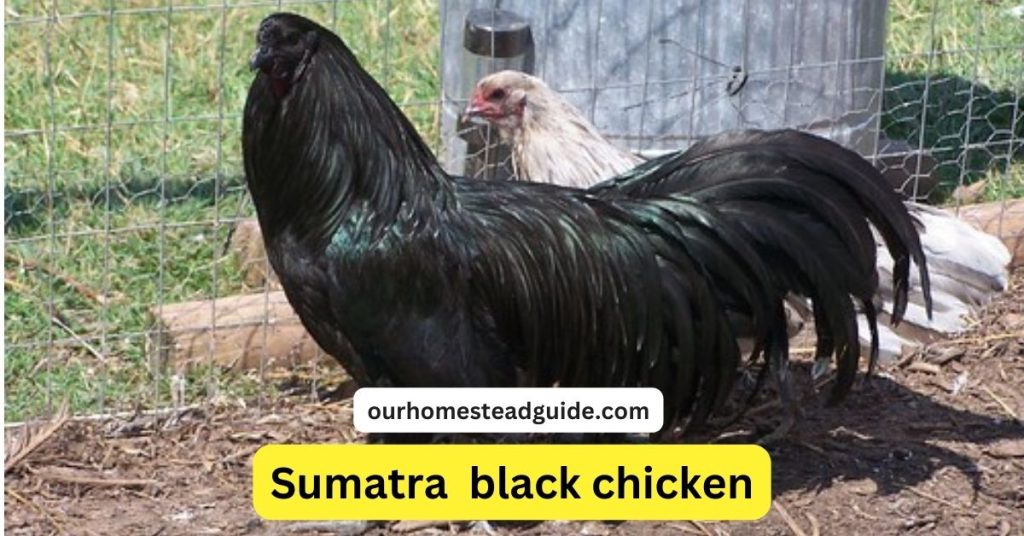
- Purpose: Ornamental
- Average Weight: 4 lbs
- Egg Production: 100 per year
Although they are indigenous to Sumatra in Indonesia, Sumatra chickens are also found in Borneo and Java. Although there are several colors available for these birds, black is the most commonly chosen. The entire body of the black chicken species of Sumatra chicken is covered in lustrous black feathers. This plumage culminates in a stunning waterfall-like display of tail feathers.
This bird has black feathers, but it also has black bones and skin. This chicken has a rich red hue on its face, wattles, and comb. These chickens, a fairly unusual breed, were originally raised as fighting cocks. They are known to be amiable birds, but in reality, they may be rather aggressive.
They are also not good birds to have around if you have little children since they will not get along with other birds in your flock or cattle. Sumatra chickens can fly rather well and have long, flowing tails. This feature, which makes them very resistant to predators, also necessitates having an incredibly tall fence to contain them.
On the other hand, Sumatra chickens are great display and attractive birds. They lay just one medium-white egg a week, making them mediocre layers. They also yield rough, gamey flesh, making them lousy meat birds. The biggest males barely reach a weight of three or four pounds, indicating that they are likewise rather little.
Langshan
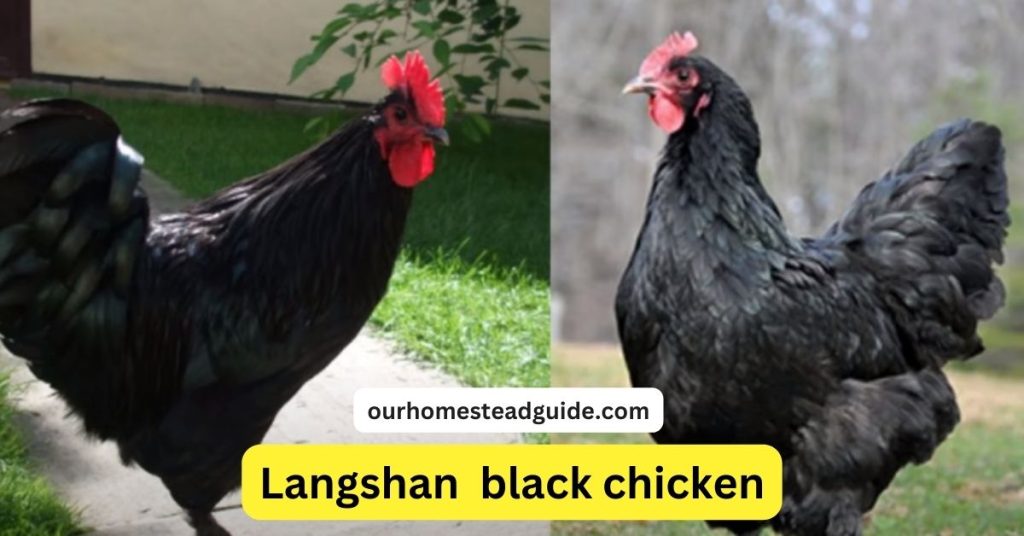
- Purpose: Dual-purpose
- Average Weight: 7-10 lbs
- Egg Production: 180 per year
It might be challenging to locate endangered Langshan chickens, especially Black Langshans. Their legs are covered with feathers, and the plumage ends just before the toes. They appear to be sporting leg warmers as a result! These beautiful and serene hens are a wonderful addition to any mixed flock.
The Langshan breed, which originated in China, takes its name from an area on the Yangtze Kiang River. Unfortunately, because most poultry distributors do not offer Langshan chickens, it is difficult to find these birds for sale. They are available in hatcheries that focus on historical or uncommon chicken breeds.
Because Langshan chickens are huge and generally docile, they may be added to almost any kind of flock. They are both independent and amiable, and they have clever, brilliant eyes.
Because Langsham birds have two uses, you may grow them for either meat or eggs. Every week, they provide an adequate quantity of meat with a fair flavor and an abundance of medium-sized brown eggs. These eggs are one of the deepest shades of brown that you will encounter.
Jersey Giant
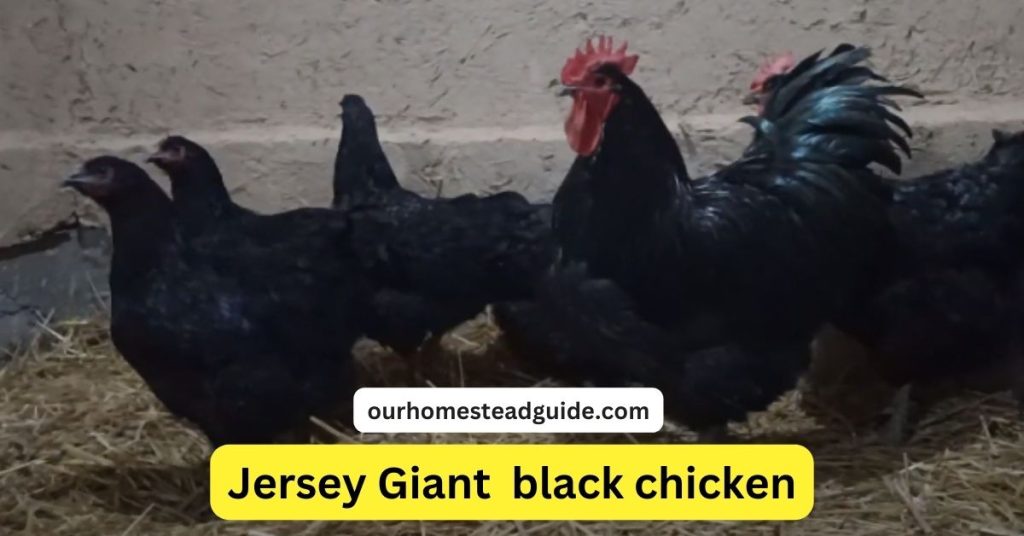
- Purpose: Meat production
- Average Weight: 11-15 lbs
- Egg Production: 150-200 per year
The Jersey Giant is the leader of the flocks in the barnyard, as his name suggests. However, they are also quite submissive. As a meat bird and substitute for turkeys, Jersey Giants were first domesticated in the United States. You won’t find a larger purebred chicken breed elsewhere.
Being among the larger varieties of chicken, these kinds and laid-back chickens will require a little bigger run and coop. Other than that, they are simple to care for, excellent companions, and excellent egg producers.
Every year, Jersey Giants lay about 150 very big brown eggs. They are also excellent as meat birds. These hens thrive in the cold, utilizing their plentiful body fat to keep warm, but they suffer in the heat. They do not, however, have any problems living in semi-confinement.
Even though these birds can weigh up to fifteen pounds, keep in mind that your hens will not be as heavy as the roosters. That being said, they are a fantastic choice for your backyard flock due to their balanced temperament and resistance to cold weather.
La Fleche
- Purpose: Dual purpose
- Average Weight: 6.5 lbs
- Egg Production: 200
You won’t regret choosing this uncommon breed of chicken for your poultry yard, despite its peculiar nature. La Fleche takes its name from the Paris, France-based competition in which it was first held. This breed, which dates back to the early 15th century, is known as the Devil’s Bird because of its peculiar look.
This chicken has two horn-like combs in addition to its all-black appearance. The bird is classified as highly endangered because it is a heritage breed. It is becoming more and more well-liked, mostly because it yields really tasty meat. Regretfully, this kind of chicken grows slowly; it will take it around 10 months to reach maturity. A hen weighs about 6.5 pounds.
These birds are dual-purpose, raised for both meat and eggs. Also kept as an ornamental bird, this chicken does well in confinement. However, it can be a bit wild and is difficult to tame. It does well in the heat but does not like living in cold environments.
Swedish Black
- Purpose: Egg production
- Average Weight: 5-7 lbs
- Egg Production: 150 per year
Swedish Black chickens are all-black birds that resemble Ayam Cemani in color, as one might expect. These chickens are all black, with skin, feathers, and bones that are all black because of a genetic abnormality shared with Ayam Cemani. Their tongues are black as well. But compared to Ayam Cemanis, Swedish Black chickens are significantly smaller and harder to locate.
Despite this, Swedish Black chickens have a more laid-back demeanor than Ayam Cemani and are great egg layers. In addition, they are far friendlier than their Indonesian counterparts, assuming the role of domestic chicken with greater grace. The serene Swedish Blackbird may lay over 150 cream-colored eggs annually.
Araucana
The Araucana chicken is named after the Araucania area of Chile and comes from South America. Relatively few kinds of chicken lay beautiful blue eggs, all descended from the Araucana. The Araucana chicken is rumpless and lacks a tail.
In addition, the breed’s noticeable ear tufts are connected to a deadly autosomal dominant trait. Two copies of this gene cause the death of the chicks either before or soon after hatching. In both bantam and big sizes, the APA acknowledges just five variants, but European authorities accept up to twenty colors.
Cochin Chicken
Originating in China, Cochin chickens are large, fluffy birds with heart-shaped feathers that reach their feet. Because of her love for this breed, Queen Victoria constructed a private aviary where she could spend time with a small flock that she received as a gift.
The hen craze that was created by cochin chickens caused the price of decorative hens to skyrocket as nobles flocked to emulate Queen Victoria’s influence. When the market burst, prices continued to skyrocket, and several breeds—like the Cochin chicken—suddenly lost popularity.
Cochin chickens are once again quite common as show birds nowadays. These resilient birds are recognized by the APA in nine colors for big sizes and 17 colors for bantam sizes.
Crèvecoeur Chicken
Possibly the earliest chicken to have come from France, the Crèvecoeur chicken got its name from the town of Crève-Coeur en Ange. There’s only one hue available for these shiny black fowl. The shaggy crests and beards of Crèvecoeur hens give them a rather unkempt appearance.
Their long, curved sickle feathers, which shimmer deeply and brightly in the sun, are used to maintain their tails upright. When Germany conquered France during World War II, the German soldiers almost completely devoured the Crèvecoeur chickens, almost resulting in their extinction.
Luckily, some farmers were able to conceal a few birds, ensuring the survival of the Crèvecoeur chicken. Breeders in France, Australia, and the US have been working to reestablish the breed since then, and it is slowly making a comeback.
Kadaknath Chicken
The Indian chicken known as Kadaknath probably came from the wild. The Kadaknath chicken carries a gene that results in fibromatosis, or melanin hyperpigmentation, just like the Indonesian Ayam Cemani. The bird’s epidermis and connective tissues become black as a result of these excessive deposits of dark pigment.
Jet black, penciled, and golden are the three recognized colors in India for the Kadaknath chicken, even though the APA does not now recognize it. The jet-black type is all-black on the inside and exterior due to its all-black feathers.
Because of excessive eating of its tasty black flesh, the Kadaknath chicken was on the verge of extinction. However, government authorities have tried to save the species by implementing a paid breeding program.
Leghorn Chicken
The majority of people associate Leghorn chickens with the industrial, white breed. But as of right now, the APA acknowledges black among the many hues of non-industrial Leghorn chickens. For the big variety, they mention six colors, while for the bantam species, they list eleven colors.
The Italian area of Tuscany is where the Leghorn chicken first appeared. Up to 320 white eggs can be produced annually by this strain. The industrial-type Leghorn is the cornerstone of the US commercial egg market. The majority of the white eggs you buy in supermarkets are produced there. Backyard flocks are more likely to have heritage-type Leghorn chickens.
Most Frequently Asked Questions!
Q: What makes the Asian Black Chicken unique in appearance?
From a distance, the Asian Black Chicken looks completely black, yet in the sunshine, its feathers glisten a beautiful purplish-green color.
Q: How old is the Asian Black Chicken, and when was it acquired?
The Asian Black Chicken we received at the end of March is believed to be four or five months old as of the end of August.
Q: How does the size of the Asian Black Chicken compare to other chickens?
The Asian Black Chicken is one of the largest chickens in our flock since it is noticeably bigger than our other chickens.
Q: Can you tell us more about the health and diet of the Asian Black Chicken?
The Asian Black Chicken has a strong appetite, is robust, and is healthful. Its superior foraging skills add to its general health.
Q: What is the temperament of the Asian Black Chicken?
Like our Sapphire Gem, the Asian Black Chicken has a rather calm demeanor. It is amiable and simple to use.
Q: Are there other chicken breeds on Highland Homestead?
Yes, we do have other hens. The Sapphire Gem and the silver-laced Wyandotte, for example, have different traits.
Q: Has the Asian Black Chicken started laying eggs, and what can we expect in terms of egg production?
Indeed, the Asian Black Chicken has just begun to lay eggs. Its potential as a layer excites us, and we’ll keep you informed on its egg production in the future.
Q: How can I differentiate the Asian Black Chicken from other breeds in your homestead?
Although the Asian Black Chicken and the Sapphire Gem are comparable in size, the Asian Black Chicken is significantly bigger. It is also distinguished by its distinct purplish-green sheen.
Q: What is your overall experience with the Asian Black Chicken?
Our flock has benefited greatly from the addition of the Asian Black Chicken. It is an important member of Highland Homestead because to its size, temperament, and general well-being.
Q: Can we expect more updates about the Asian Black Chicken and other homestead activities?
Of course! Watch this space for further Highland Homestead updates. We’ll keep sharing our experiences and updates on other noteworthy happenings, such as the creation of the Asian Black Chicken.
you may also like this article.

